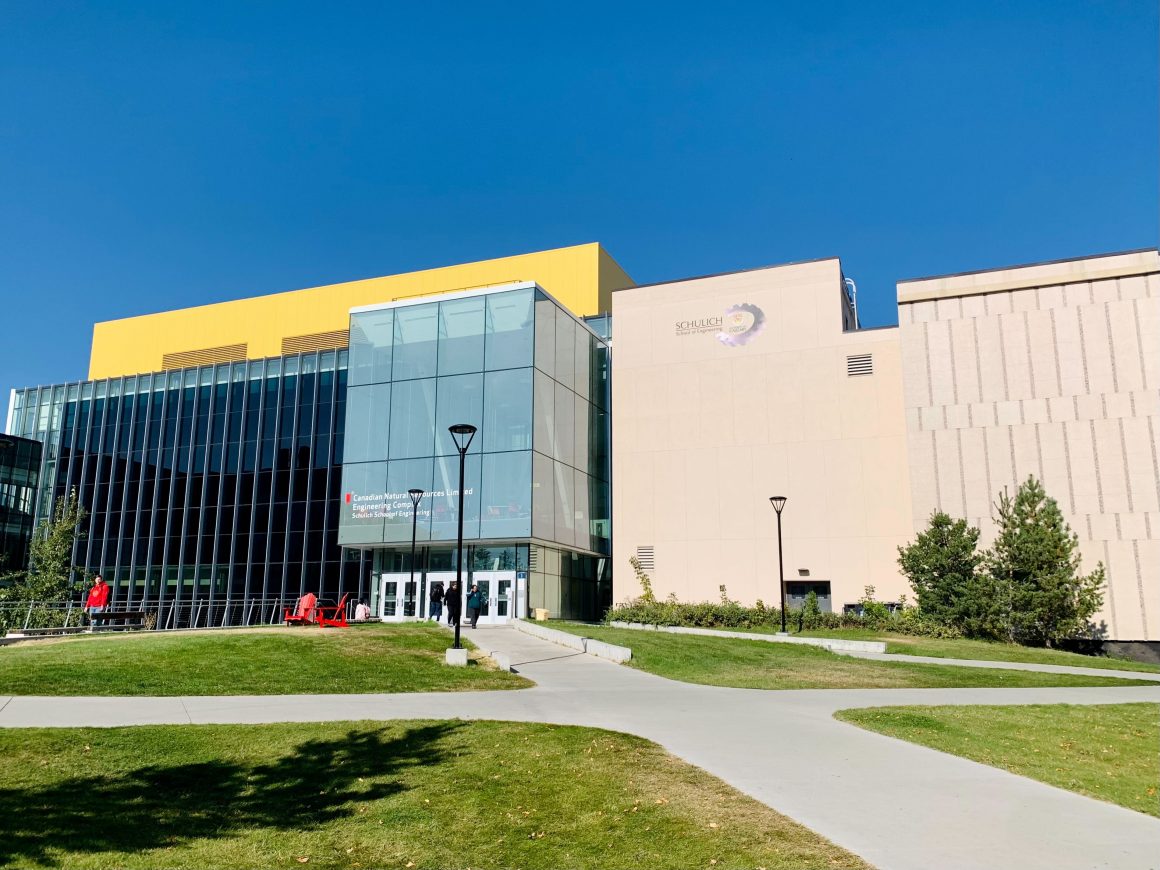
Why the engineering complex is a popular study space
By Nazeefa Ahmed, October 11 2022—
The newer section of the engineering complex is always buzzing with activity. From stressed fourth-years pounding through a problem in a quiet corner to people catching up with friends on the centre steps, the building is a place on campus that feels alive all the time.
The newer section of the engineering building was designed by architecture firms Diamond Schmitt and Gibbs Gage. However, unlike the dense and dark quarters of the older sections of the engineering complex, the newer section is open and filled with natural light. Spaces exist in harmony with each other, creating a seamless flow of activity from one area to the next. The purposeful design of the building explains why both engineering and non-engineering majors choose to spend their time there over other spaces.
Abundance of natural light
A study by the HR advisory firm, Future Workplace, found that employees who sit closer to windows are more productive than those under artificial light. Since, as students, we spend most of our time indoors, either in classes, commuting, or studying, finding places with natural light helps us reorient our mind and focus on the task at hand. The glass ceiling in the atrium centre allows for sunlight to shine through all corners of the space. Since natural light decreases seasonal depression, it is a great place for people to study during the winter months.
Not too quiet
The complex has the right balance of isolation and community. Unlike the dark halls of science B, the open-concept design allows for pockets of silence paired with areas to socialize. This is great for people who despise the soul-crushing silence of places like the law library. A gentle hum of people murmuring in the background is a great way to turn studying into a community experience. Even if someone is being obnoxiously loud, the acoustics of the space usually softens the voices to background noise.
Consistency
Every floor has the same format. Washrooms, tables, and lounging couches are spaced so that it is clear where one must go for what activity. All necessary spaces are close for convenience, but far enough not to disturb another activity. For example, I like studying at the tables beside the windows due to the tinted windows, table space, and abundant charging stations. When I am tired, I transfer to the couches to passively read some notes. Sometimes, I take a nap on the chairs on a tough day. The space has streamlined my workflow, making it easy to transition between high- and low-intensity work with minimal friction.
Hub design
Unlike the maze-like structure of the older engineering building, the newer complex is designed like a hub, where every corner is as close to the centre as possible. The design is so that one can watch the commotion without having to be a part of it. Whether it is observing a ping pong match during your study break, or looking below while riding the exercise bike, being in the space allows one to feel like they are a part of something bigger than themselves.
More interactions
Since the building is so open, you are bound to run into an old friend or acquaintance. Being in a space where many people are around is a great way to expose yourself to new friendships and opportunities with minimal effort. Being a student is sometimes very isolating, but we can choose to make the solitary experience more tolerable. Put yourself out there by greeting a familiar face or finally introduce yourself to the mysterious stranger who caught your eye.
A well designed building begins with a clear understanding of the space’s purpose. University buildings should be designed for the betterment student’s mental health and productivity. I believe the architects who designed this building put a lot of effort into meeting the needs of students. As a non-engineering major with almost no classes in the building, I still find myself often gravitating towards the space.
